Considered one of the "mother sauces" of classic French cuisine, this Low FODMAP Béchamel Sauce (pronounced bay-shuh-mel) makes a rich, decadent sauce that goes well with lasagna Bolognese, macaroni and cheese, moussaka, and more. Also known simply as "white sauce," this low FODMAP Béchamel recipe, while far from a traditional béchamel, is velvety, rich, and incredibly delicious. It's also gluten-free.
Jump to:
What is Béchamel Sauce (or White Sauce)?
As mentioned, béchamel sauce is commonly referred to as one of the "mother sauces" of French cuisine. This means it's a basis for other secondary (or "small") sauces within French cuisine. My version of béchamel sauce is actually technically a mornay sauce as it contains cheese. I've chosen to label it as béchamel sauce as mornay sauce is a type of béchamel sauce that is far less known in North America.
Traditional béchamel sauce is very simple, containing simply butter and flour to make a roux. Once the roux is made, milk is added to the roux, and a sauce is created and thickened by cooking and whisking.
My low FODMAP spin on béchamel sauce uses both ghee and garlic-infused olive oil for the fat element and gluten-free all purpose flour for the flour element. While I'm probably never going to get accepted into Le Cordon Bleu Culinary School due to making these changes, it makes a very tasty, low FODMAP white sauce.

Why is your Béchamel so thick?
I created this béchamel sauce to go in my Low FODMAP Lasagna Bolognese. Therefore, I've created a thicker béchamel sauce than you'd typically use in, for example, macaroni and cheese. This helps my lasagna hold together when cut and not become soup. While lasagna soup is probably really yummy as well, I'm looking to make a more traditional lasagna.
Whether to make a thick or thin sauce will depend on how you intend to use this béchamel sauce. To make a thinner béchamel, you'd simply reduce the amount of butter/fat and flour you use while keeping the same amount of milk. I'll explain this better in the recipe card below.
Necessary Equipment
The equipment I use to make this low FODMAP béchamel sauce / white sauce includes:
- Medium saucepan or saucier - I use a 2-quart saucepan
- Whisk
- Measuring cups and spoons
Low FODMAP Béchamel Sauce / White Sauce: Ingredients & Success Tips
Ghee or Butter & Garlic-Infused Oil
To start this low FODMAP béchamel sauce recipe, I first make a roux. To make the roux, I place a medium saucepan or saucier over medium low heat on the stovetop. I immediately add ghee (also known as clarified butter) or regular butter and garlic-infused olive oil to the pot and wait for the ghee/butter to melt.
According to Monash University's Low FODMAP Diet App, butter does not contain carbs and therefore no FODMAPs; however, it is high in fat which can irritate some people with IBS. The addition of garlic-infused olive oil, while also free of FODMAPs. Consult your doctor or dietician with concerns before making this recipe.
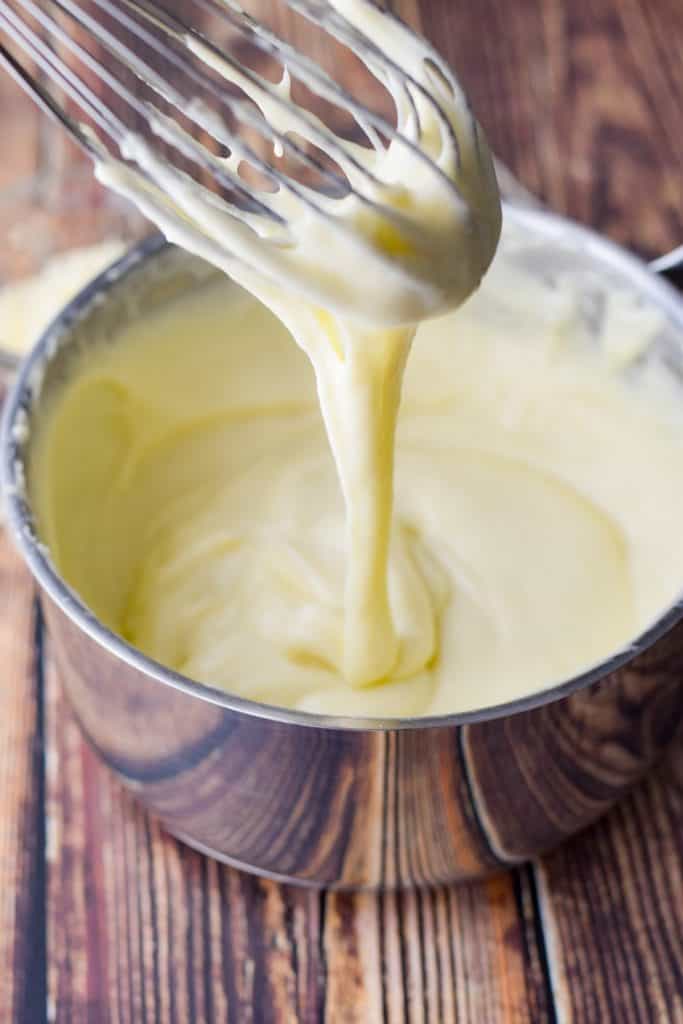
Gluten-Free All-Purpose Flour
Once the ghee or butter has melted, I add gluten-free all-purpose flour and whisk until well-blended and smooth, about 3 minutes. I use Bob's Red Mill Gluten-Free 1:1 Baking Flour. You will want to ensure the one you use does not contain high FODMAP ingredients. This article on FODMAP Everyday is an awesome resource on this topic: Choosing a Low FODMAP All-Purpose Flour.
I chose gluten-free all-purpose flour over other low FODMAP flours as it creates the best consistency for the sauce. I did test it with tapioca flour (my thickener of choice). It turned out okay but was a little bit too gloopy for my taste. If you're looking for a grain-free béchamel sauce and don't mind it being a bit gloopy, I used 2 tablespoons of tapioca flour for a thinner béchamel and ¼ cup for a thicker béchamel. It's hard to notice the gloopiness (is that a word?) in lasagna, but I wanted it to work for other recipes as well.
Milk, Lactose-Free if Needed
Once the roux is blended and has cooked for a few minutes, I increase the stovetop heat to medium high. I slowly pour in the milk, 1 cup at a time and whisking consistently for about 30 seconds between cups, so that the milk warms up at a gradual pace. I keep whisking constantly until the sauce thickens, about 4-5 minutes, or until it's to my desired thickness, keeping in mind that the parmesan will further thicken the sauce. Be careful not to keep it on the heat for too long, or else it will start to boil. Bringing it to a boil may create an unpalatable consistency for the sauce.
If you're wondering which type of milk to use, I typically use 1% but think that any fat percentage will work. We're adding a ton of butter and oil to it anyway. If you're lactose-intolerant, you'll definitely want to use lactose-free milk. I've not tested this recipe with dairy-free milk.
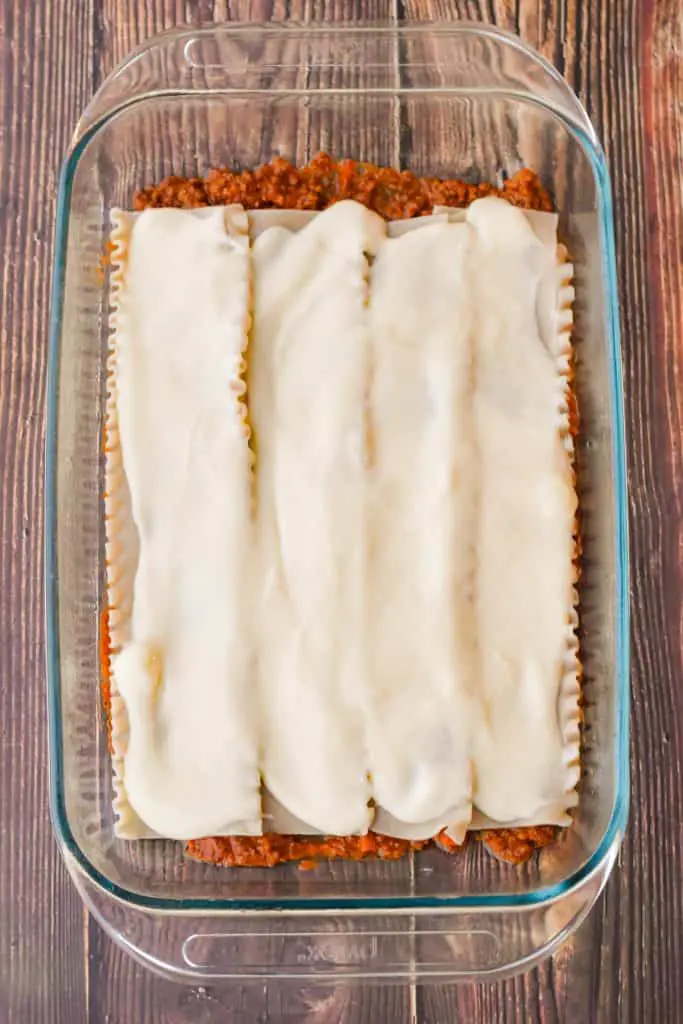
Parmesan
I remove the saucepan from heat and whisk in the parmesan until well-combined.
As I previously stated, this low FODMAP béchamel sauce recipe is intended for lasagna, so I've added parmesan to it. If you intend to make something else containing this béchamel sauce, you may not want to add parmesan and instead add other ingredients to better suit that recipe. It truly depends on what you're using it for.
I plan on developing more recipes containing béchamel sauce over time and will update this information as I do.
Serving & Storage
Once made, I use this sauce either immediately or the next day in my Low FODMAP Lasagna Bolognese. After cooling, it can be stored in an airtight container in the refrigerator for up to 1 week, although it is best when used within 24 hours.
Print
Low FODMAP Béchamel Sauce (White Sauce)
- Total Time: 15 minutes
- Yield: 12 servings 1x
- Diet: Gluten Free
Description
This Low FODMAP Béchamel Sauce (or White Sauce) is a rich, decadent sauce that goes well with lasagna Bolognese, macaroni and cheese, moussaka, and more. Gluten-free.
Ingredients
- ⅓ cup ghee or butter*
- 3 tablespoons garlic-infused olive oil
- ½ cup gluten-free all-purpose flour
- 3 cups milk (lactose-free if needed)
- 1 teaspoon salt
- ½ teaspoon ground white pepper
- ¾ cup parmesan cheese, finely-shredded (see notes)
Instructions
- Prepare all ingredients before starting to cook.
- Place a medium (2-quart) saucepan or saucier over medium-low heat on the stove top. Add ghee or butter and garlic-infused olive oil and wait until the ghee melts.
- Add flour and whisk and cook until well blended and smooth, about 3 minutes.
- Increase heat to medium high. Slowly add milk, 1 cup at a time and whisking about 30 seconds between cups. Add salt and white pepper and continue whisking constantly until the sauce thickens, 4-5 minutes or until your desired thickness, but before the mixture starts boiling, keeping in mind that adding parmesan will further thicken the sauce. Remove from heat.
- Add parmesan (see notes) and whisk until thoroughly combined. Taste the sauce and adjust seasonings as desired.
- Use immediately in Low FODMAP lasagna Bolognese (or your desired dish) or store in an airtight container in the refrigerator after cooling until ready to use. It’s best when used immediately or within 24 hours but can typically last when kept in an airtight container in the refrigerator for up to 1 week.
Notes
- Servings: Makes about 3.5 cups total, with the serving size being just under ⅓ cup per serving.
- Butter: Per Monash University’s Low FODMAP Diet App, butter does not contain carbohydrates and therefore no FODMAPs; however, it is high in fat, which can be an additional symptom for some people with IBS. Garlic-infused olive oil, while also not containing FODMAPs, further increases the fat content of this recipe.
- Adding parmesan: If making this béchamel sauce for a recipe other than lasagna (for which this béchamel sauce recipe was created), you may want to omit the parmesan and add other ingredients better suited to that recipe. For example, if making mac and cheese, you may want to add cheddar cheese instead of parmesan cheese.
- Parmesan and FODMAPs: Monash University only found trace amounts of FODMAPs in parmesan cheese.
- Thinner béchamel sauce: As I created this béchamel sauce recipe for lasagna, I purposely made it on the thick side so that the lasagna holds together. If you prefer a thinner béchamel, reduce the ghee or butter to 3 tablespoons, the garlic-infused olive oil to 1 ½ tablespoons, and the flour to ¼ cup. Keep the quantity of milk the same. If you find the sauce is too thin, keep it on the burner longer to further reduce it while whisking constantly until it’s to your desired thickness. The addition of parmesan at the end further thickens the sauce.
- Prep Time: 5 minutes
- Cook Time: 10 minutes
- Category: Sauces
- Method: Stovetop
- Cuisine: French


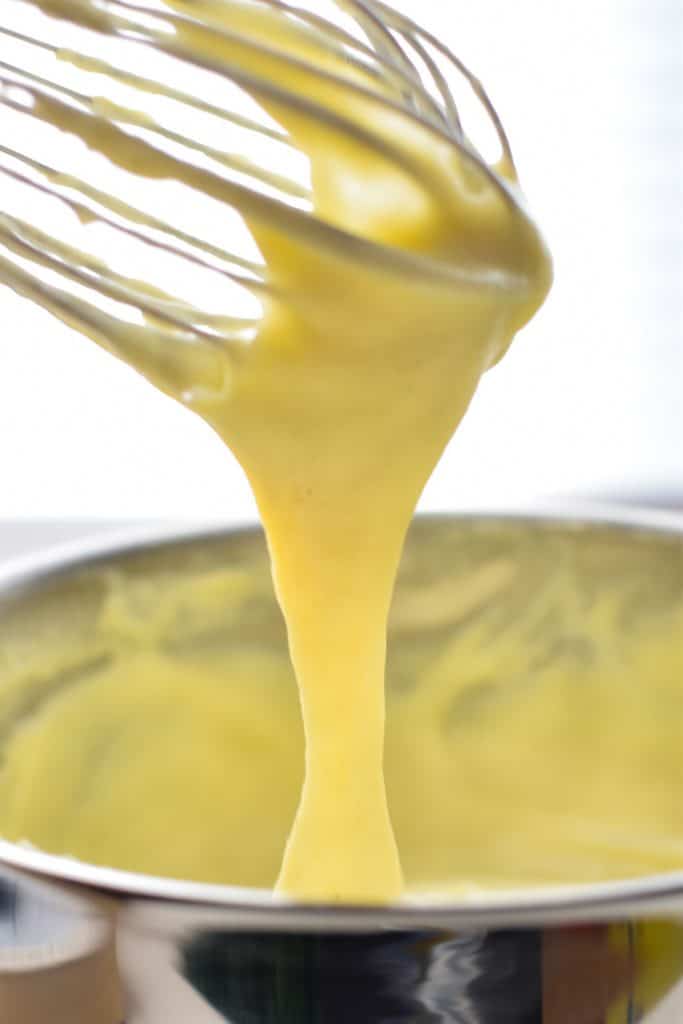



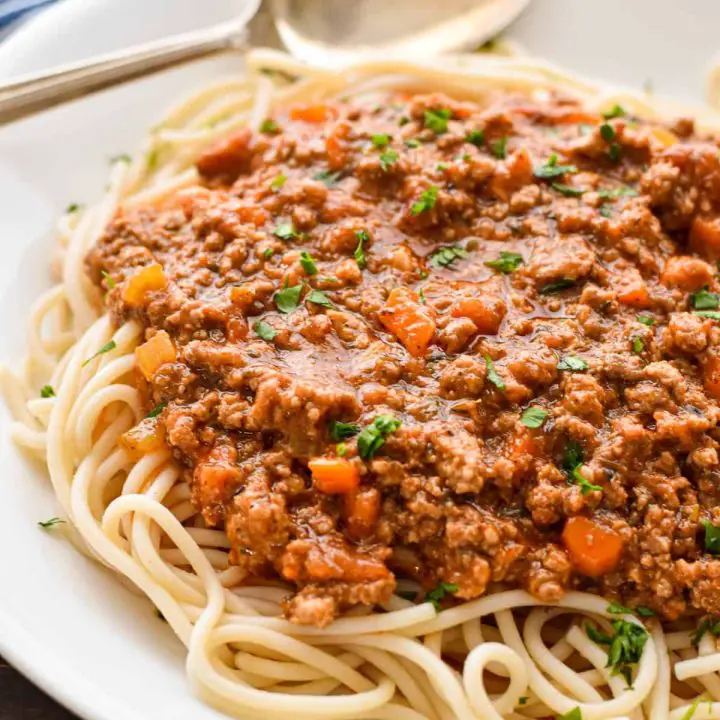

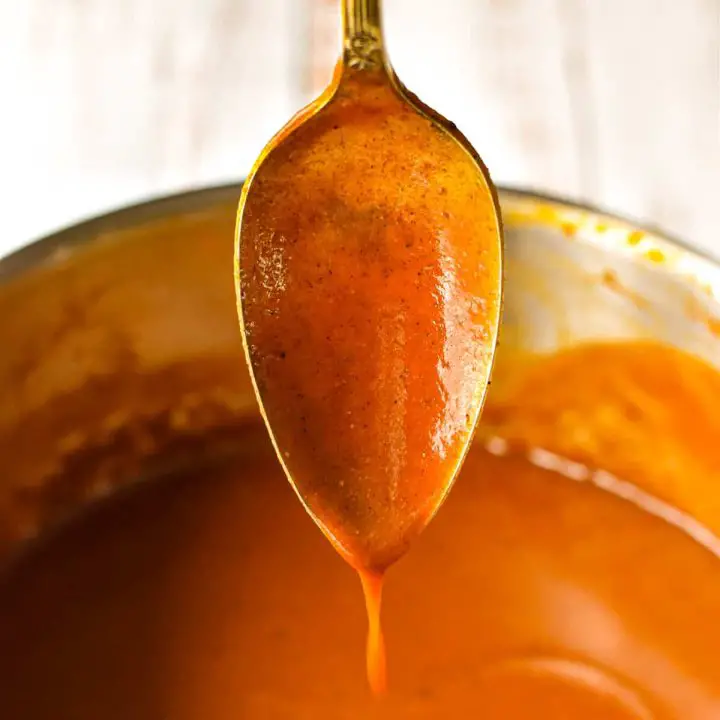
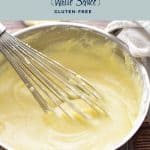
KK says
This sauce is genius and really makes lasagna absolutely unctuous and delicious.
Gail says
I love your feedback! 🙂 Thank you so much!